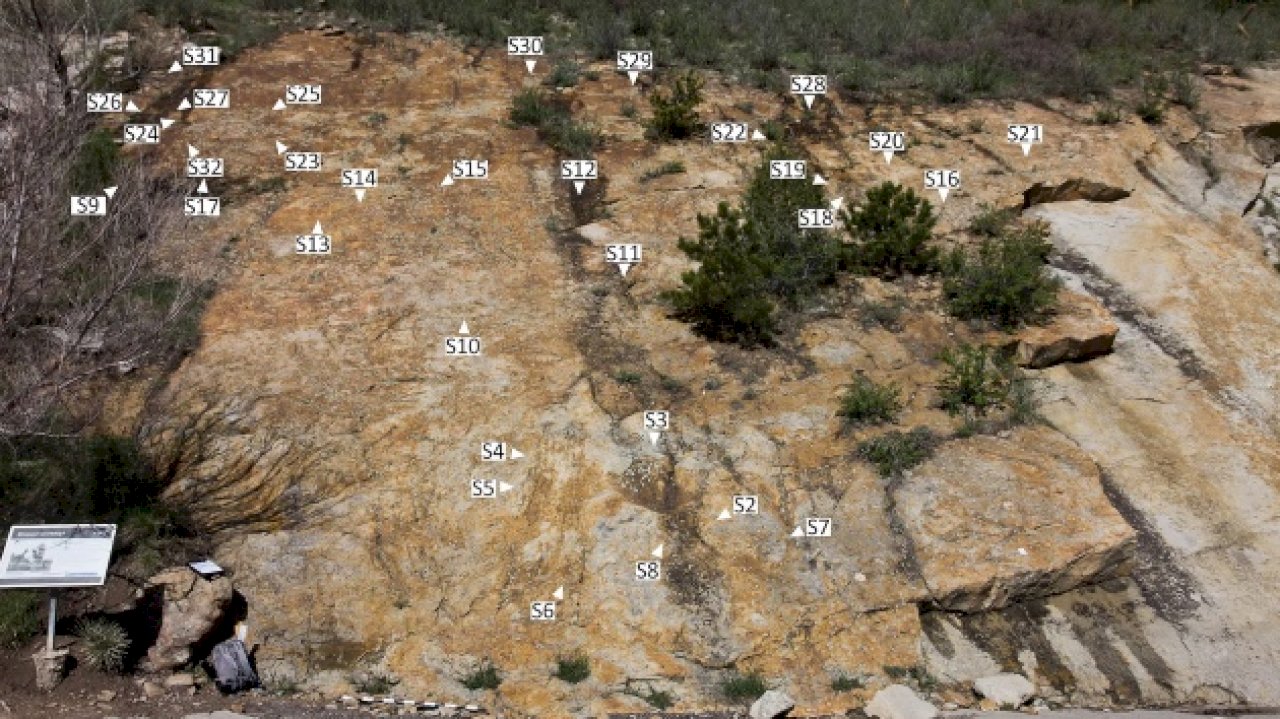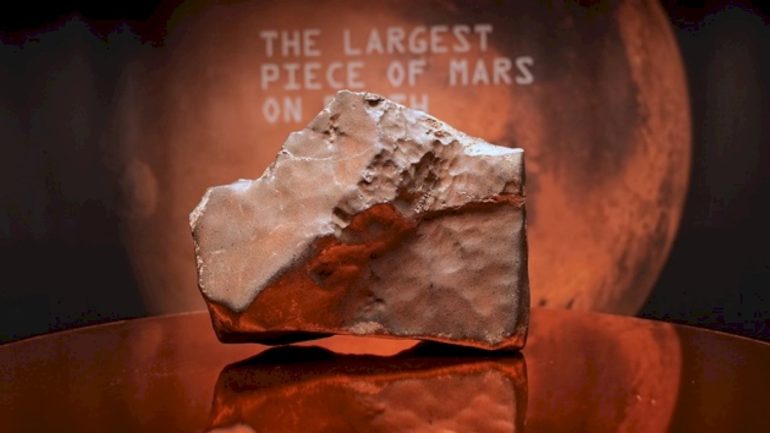Listeners:
Top listeners:
-
 play_arrow
play_arrow
94.3 Rev-FM The Rock of Texas | Where Texas Rocks
-
 play_arrow
play_arrow
99.1 The Buck Texas Country's Number 1 Country
-
 play_arrow
play_arrow
103.7 MikeFM Your Texas Hill Country Mix Tape
-
 play_arrow
play_arrow
KERV 1230 AM
-
 play_arrow
play_arrow
JAM Sports 1 JAM Broadcasting Sports 1
-
 play_arrow
play_arrow
JAM Sports 2 JAM Broadcasting Sports 2

(DINOSAUR RIDGE, Colo.) — Researchers have discovered evidence of one of the largest dinosaur mating “dance arenas” in present-day Colorado.
Previous studies have identified a couple of “dinosaur lek” areas — where male dinosaurs likely congregated to perform courtship displays for females, primarily for the purpose of finding a mate — at Dinosaur Ridge, 20 miles west of Denver.
However, using high-resolution drone photography and photogrammetry to make 3D models of the sandstone at Dinosaur Ridge, a team reexamined the area to see if there were more markings on the surface.
What they found were dozens of lek traces tightly clustered together, suggesting the area was once a site to perform mating rituals, similar to some modern-day birds.
“So, these trace fossils, we interpret them to be evidence of dinosaur courtship activities, just from kind of process of elimination,” Caldwell Buntin, co-author of the study and a lecturer at Old Dominion University in Norfolk, Virginia, told ABC News.
Buntin said the team ruled out that these “scrapes” were caused by dinosaurs digging for food and water, from marking their territories or from colonial nesting, which is when animals build their nests close together in groups.
“Basically, these were a lot of organisms that were coming together, performing some kind of activity that would include building some kind of nest to display to a female, and then maybe doing some kind of a dance or scraping activity, which generates a lot of the scrapes around the nest display structure,” Buntin said.
The scrapes belong to theropod dinosaurs, characterized by hollow bones and three toes and claws on each limb, which were alive during the Cretaceous period, between 145 million and 66 million years ago.
It’s not clear which species made the scrapes, but they were likely three to four feet high at the hip and were between 2.5 and 5 meters (8 to 16 feet) long, from the size of an emu to the size of an ostrich, according to Buntin.
There’s a “spectrum of different scrapes,” according to Buntin. Some are simple, shallow toe claw marks, indicating one or two scrapes from the left and right legs. There are also longer scrapes overprinting one another, resembling a wagon rut.
Additionally, there are semicircular bowl-shaped marks “associated with a step backward” with a second set of scrapes “indicating a counterclockwise or a clockwise turn.” Lastly, there are deep bowl-shaped marks with some shallow toe claw marks, Buntin said.
In terms of behavior, Buntin said these dinosaurs most resemble that of banded plovers, which are small shorebirds.
“Basically, they will dig out a nest display, basically a fake nest, to be able to show a female that, ‘Hey, I’m a strong male. I can dig this. I can make a good, strong place for you to lay your eggs,'” Buntin said. “And then when a female comes to visit, they’ll perform a dance which consists of kind of bowing, bobbing, raising their wings out, creating some scratches around the sides of that display nest.”
The authors emphasized that the site is public, meaning anybody can visit and see the scrapes for themselves compared to other scrap sites, which are on federally protected land.
“It does really make it a very, very unique site, because not only does it have this amazing like type behavior displayed, but it also is so accessible for lots of people to be able to see it and understand better about the behavior of these wonderful animals that we can see now,” Neffra Matthews, study co-author and former employee of the Bureau of Land Management, told ABC News.
Copyright © 2025, ABC Audio. All rights reserved.
Written by: ABC News
Similar posts
-
Top popular

Ingram man charged with murder after fatal shooting

Kerr Crime Stoppers offering reward up to $5,000 for information in last week’s non-viable school threat

KISD asks parents to communicate with children about words and actions after ‘copy cat’ threat note found at middle school

City of Kerrville Parks and Recreation reminds citizens that a Red Flag Warning is in effect until further notice

City of Kerrville says that May 7 General and Special Elections will proceed



